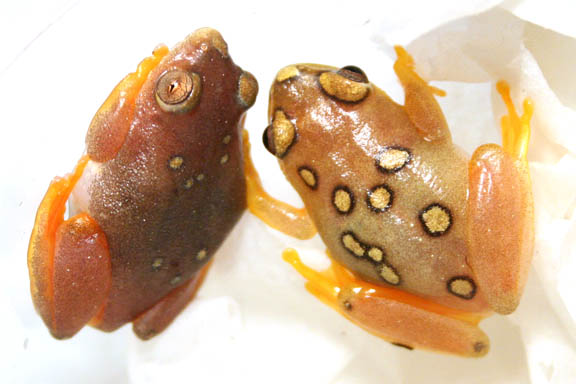Facts About Boror Reed Frog
The Hyperolius argus, commonly referred to as the Argus reed frog, Argus sedge frog, or Boror reed frog, is a remarkable amphibian inhabiting Africa's eastern coastal plain. Its range extends from southern Somalia down to KwaZulu-Natal in eastern South Africa, including countries such as Kenya, Tanzania, Mozambique, Malawi, and Zimbabwe.
One of the most intriguing aspects of these frogs is their ability to change color as they mature. Adult males are typically green, whereas females usually exhibit a reddish-brown hue adorned with large white spots. Interestingly, both sexes are initially the same color post-metamorphosis—solid green without any spots. It takes approximately two months for females to develop their characteristic color pattern, while males begin to display their vocal sacs and engage in vocalization and aggression around three months after metamorphosis.
In terms of reproduction, female Argus reed frogs lay their eggs on vegetation just below the water's surface. Each female can produce around 200 eggs, usually grouped in clusters of about 30.
These frogs favor low-elevation areas with dense, humid savanna or grassland, typically located near water sources. They breed in shallow, vegetated water bodies such as pans, vleis, and marshes, often in regions where the water is temporary.
Although the Argus reed frog is not currently endangered, it does face several threats. Urban expansion, agricultural intensification, and the introduction of predatory species such as bass can adversely affect their habitat.

 Tanzania
Tanzania